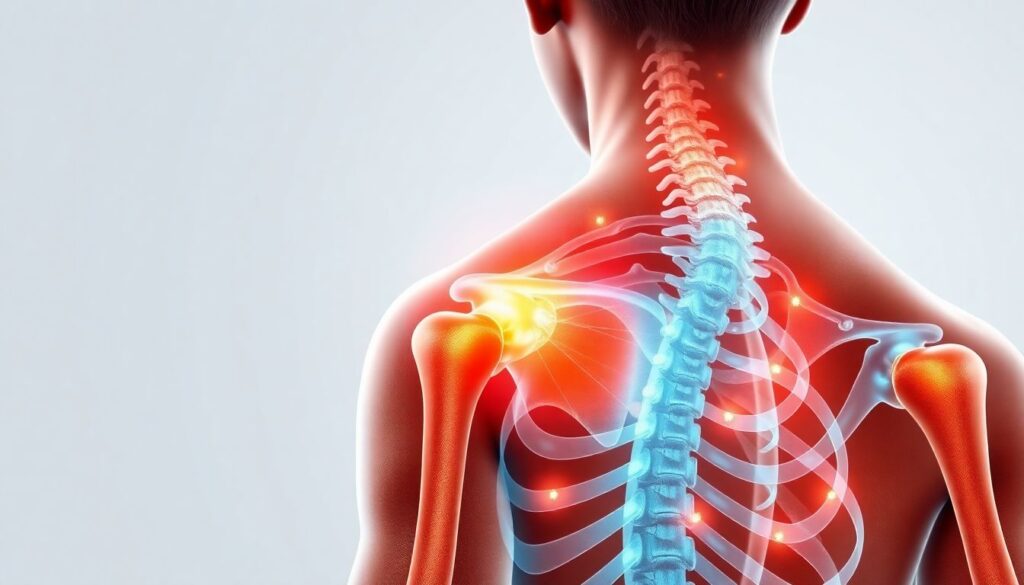Left shoulder pain is a problem many people face at some point. It can range from mild discomfort to sharp, intense pain. Knowing what causes this pain and how it is diagnosed is crucial. Accurate diagnosis helps doctors choose the right treatment and ensures proper insurance billing using ICD 10 codes. Left shoulder pain can really interfere with daily life and even limit your ability to work or carry out simple activities.
Understanding Left Shoulder Pain: An Overview
Definition and Anatomy of the Shoulder
The shoulder is a complex joint made of bones, muscles, nerves, and tendons. The main bones include the humerus (upper arm bone), scapula (shoulder blade), and clavicle (collarbone). Muscles like the rotator cuff hold everything in place and help move the arm. When any part of this system gets hurt or inflamed, it can cause pain. Pain signals travel along nerves from these structures to your brain, making you aware of discomfort.
Common Symptoms and Warning Signs
Left shoulder pain can show up in many ways. Some people notice a sharp or shooting pain, while others feel dull or aching discomfort. Pain might come with numbness or tingling radiating down the arm. Often, movement becomes limited, and lifting or rotating the shoulder gets harder. If you experience weakness or swelling, it’s a sign your problem could be more serious.
Prevalence and Impact
Shoulder pain affects people of all ages but is especially common among athletes, older adults, and those with jobs that require repetitive arm movements. Up to 26% of adults report shoulder pain at some point in their lives. This issue can cause missed work, decreased productivity, and a lower quality of life. Many are left wondering what’s behind their pain and how to get better.
Causes of Left Shoulder Pain
Musculoskeletal Causes
Rotator Cuff Injuries
The rotator cuff is a group of tendons and muscles that stabilize the shoulder. When these tendons tear or become inflamed, pain develops. This injury often results from overuse or a fall. People with rotator cuff problems may notice weakness in lifting the arm or difficulty sleeping on that side.
Shoulder Impingement Syndrome
In this condition, shoulder tendons get pinched during arm movement. Repeated overhead motions from sports or work can cause this. Typically, suffering from impingement causes pain when raising your arm or reaching overhead.
Frozen Shoulder (Adhesive Capsulitis)
Frozen shoulder happens when the shoulder capsule thickens and tightens around the joint. It’s more common in people over 40, especially diabetics. The pain usually worsens gradually and is accompanied by stiffness, making movement really hard.
Non-Musculoskeletal Causes
Cardiovascular Issues
Surprisingly, heart problems like a heart attack or angina sometimes refer pain to the left shoulder. This pain may come with other signs like chest tightness or sweating. Anyone experiencing this should seek emergency care immediately. Recognizing these warning signs can save lives.
Referred Pain from Other Organs
Problems with organs like the liver or spleen may cause pain that spreads to the shoulder. Lung conditions such as pneumonia or pleurisy can also refer pain to the shoulder area. These causes often need urgent evaluation to prevent complications.
Less Common Causes
Less frequent reasons include bursitis (inflammation of fluid-filled sacs), arthritis, broken bones, and nerve pinches. These issues often have distinct signs but can coexist with more common problems.
Diagnosing Left Shoulder Pain and Relevant ICD-10 Codes
Clinical Evaluation
Doctors begin by asking about your symptoms and health history. They check your shoulder for swelling, tenderness, and range of motion. Specific tests can help pinpoint the source of pain, such as lifting and rotating the arm or pressing on certain areas.
Diagnostic Tests
X-rays are often used to identify broken bones or arthritis. MRI scans can show soft tissue injuries like torn tendons. Ultrasound helps in assessing tendons and bursa. Blood tests may be ordered if infection or systemic disease is suspected.
ICD-10 Coding for Left Shoulder Pain
Proper coding ensures accurate records for insurance and legal documentation. Common codes include:
- M75.1: Rotator cuff syndrome
- S43.4: Adhesive capsulitis of shoulder
- M75.4: Bursitis of shoulder
- S42.0: Fracture of shoulder girdle
Using correct ICD-10 codes like these helps verify diagnoses and streamline insurance claims.
Treatment Options for Left Shoulder Pain
Conservative Management
Rest, Ice, and Physical Therapy
Giving your shoulder a break from heavy activity can reduce inflammation. Applying ice packs helps numb pain and decrease swelling. Physical therapy strengthens muscles and restores mobility. Simple home exercises can support recovery and prevent future injuries.
Medications
Nonsteroidal anti-inflammatory drugs (NSAIDs) like ibuprofen help reduce pain and swelling. If pain persists, corticosteroid injections may be recommended for quick relief.
Surgical Interventions
Surgery becomes necessary if conservative treatments don’t help. Arthroscopy, a minimally invasive procedure, is common to repair torn tendons or remove inflamed tissue. In severe cases, open surgery may be needed.
Alternative Therapies
Some patients find relief with acupuncture or chiropractic care. These options can complement medical treatments but should be performed by qualified practitioners.
Tips for Managing Pain and Preventing Recurrence
Learn ergonomic practices at work. Incorporate strengthening exercises into your routine. Maintain good posture and avoid repetitive overhead activities. Small lifestyle changes can significantly lower your risk of future pain.
When to Seek Medical Attention
Emergency signs include chest pain, severe weakness, or sudden loss of movement. If your pain lasts more than a week or worsens, see a healthcare provider. Early diagnosis leads to better outcomes. Be prepared to explain your symptoms clearly and describe when the pain started.
Conclusion
Left shoulder pain can stem from various causes, from muscle injuries to heart problems. Using the right ICD-10 codes helps with proper diagnosis and insurance claims. Early treatment, whether conservative or surgical, can make a big difference. Don’t ignore persistent or severe pain. Seek medical help and take steps today to protect your shoulder health.



